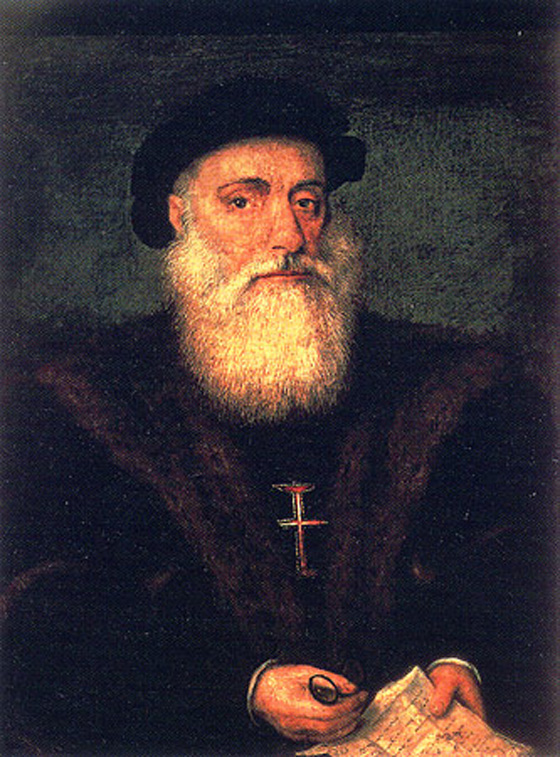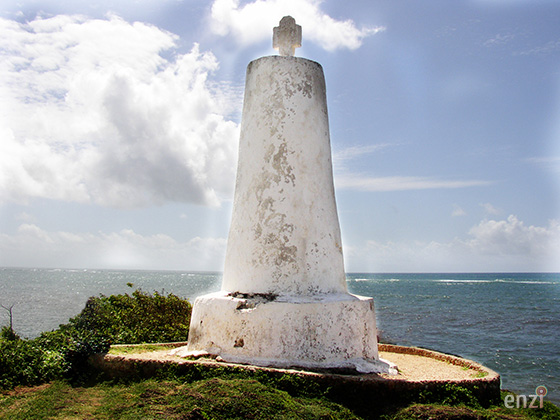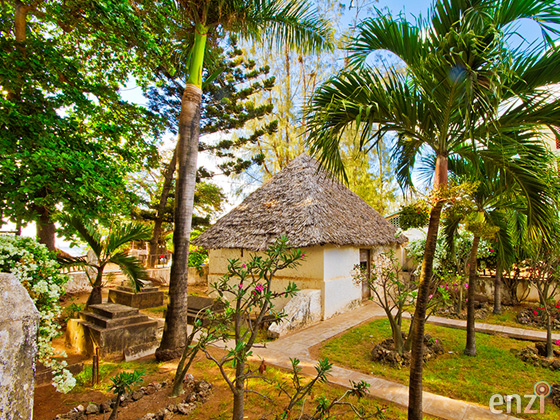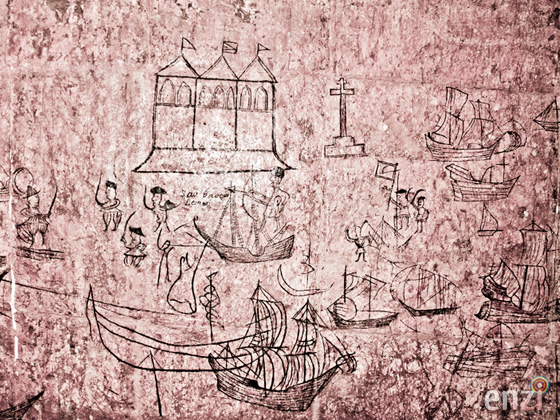Portuguese conquests
Wareno (Portuguese) arrival
Soon after Bartolomew Diaz rounded the Cape of Good Hope in 1487, Vasco da Gama became the first known European to visit Mombasa where he received a chilly reception in 1498. Apparently he had nothing much to offer the wealthy, sophisticated, intercontinental Arab and Swahili sophisticates who ruled the town.

Vasco da Gama
On April 7th, 1498, the small Portuguese fleet dropped anchor outside the reef off Mombasa.
“In front of the city, there lay numerous vessels all dressed in flags. And we, anxious not to be undone also dressed our ships, and we actually surpassed their show. – Vasco da Gama”
A week later, after contrived hostilities by Mombasa inhabitants, Vasco da Gama sailed on to Malindi, Lamu and beyond.
Two years later, the Portuguese in a retributive attack sacked Mombasa.

Vasco da Gama pillar, Malindi.
The next major encounter was in 1505 when Dom Francisco D’Almeida, the new Portuguese Viceroy of India, arrived off the town. His ships were fired on from a strongpoint at the entrance to the harbour. They set fire to the town and went on a looting spree. Among the booty removed from Mombasa during the sacking,
“there was a large quantity of cotton cloth for Sofala in the town, for the whole coast gets its cotton cloth from here. So the Grand-Captain got a good share of the trade of Sofala for himself. A large quantity of rich silk and gold embroidered cloths was seized, and carpets also; one of these, which was without equal for beauty, was sent to the King of Portugal together with many other valuables.”
The Portuguese raiders also added camels, cattle and two elephants to their spoils!
Mombasa was sacked by another Portuguese expedition led by Nuño da Cunha in 1528. The Portuguese continued their occupation along the coast until 1585 Turkish mercenaries led by Emir ‘Ali Bey (Mirale Bey) caused revolts from Mogadishu to Mombasa against the Portuguese landlords. Malindi however, remained loyal to Portugal. Emir Ali Bey was to return in 1588 and drive the Portuguese off Mombasa until after a Zimba attack that slaughtered the Muslim inhabitants, the Portuguese took over Mombasa a third time in 1589. Four years later in 1593, they started construction of a permanent garrison, Fort Jesus to administer the region. It was completed in 1596. The Sheikh and the Portuguese Governor of the Fort, Mateus Mendes de Vasconcellos got on well together. Attempts to attract Portuguese traders and agriculturists into the town were not successful, however. The Sheikh’s son, Hassan, took over in 1606 when he died and the Portuguese also installed a new Governor, Manuel de Mello Pereira. Soon there was a falling out and Hassan’s son Yusuf, installed in 1626 after serving in the Portuguese fleets. Yusuf had been educated in Goa and was now a Christian called Dom Jeronimo Chingulia and married to a Goan lady. He was shunned by the prominent Arab establishment and became increasingly frustrated resulting in a drastic action that freed him and Mombasa from the Portuguese predicament.

Portuguese chapel and cemetery in Malindi built in the late 15th century. The building was abandoned by the Portuguese in 1593.
Revolt: On August 15th, 1631, Dom Jeronimo (Yusuf) fatally stabbed the unsuspecting Portuguese Governor during the Feast of the Assumption of the Virgin Mary, sparking off a massacre of all the Portuguese in the Fort and on the Island. Yusuf was to later meet his death in 1637 near Jeddah, Saudi Arabia, at the hand of pirates. While Yusuf had been away, the Portuguese had returned to the Fort in 1635.
In 1652, the Portuguese settlements on Pate and Zanzibar Islands were wiped out by an Arab-Swahili alliance, but the Portuguese later retaliated by beheading hundreds of prominent Arab and Swahili citizens and also exacted a huge amount of tribute. Over the next years, the Omanis and Portuguese continued their bloody duel.
In March 1696, an Omani squadron with a force of 3,000 men commanded by Imam Saif bin Sultan arrived at Kilindini, Off Mombasa. Troops landed and the Fort was put under a siege which lasted 33 months, starting on March 13, 1696 until December 13th, 1698. After several failed attempts during the 33 months, the Arabs managed to scale the the wall on the night of December 12th 1698, and the Omani flag was hoisted by the next morning.
The Portuguese stayed away until 1728 when for a few months they were able to retake the Fort while the Mazrui forces were occupied elsewhere.
By 1729, the Portuguese were gone from the Kenyan coast for good.

Portuguese graffiti on Fort Jesus wall.
The Portuguese conquest did not leave a significant impression on the Kenya, Somalia and Tanzania coast. Their control in East Africa had been purely external, forcibly maintained by a few isolated garrisons. They destroyed major Arab-Swahili towns of the day, the ruins of which are covered by Jungle today. They were more successful with their influence in Mozambique, Angola and faraway Goa.
To give them some credit, the Portuguese did introduce cassava, maize and pineapples in low scale cultivation to Kenya.
